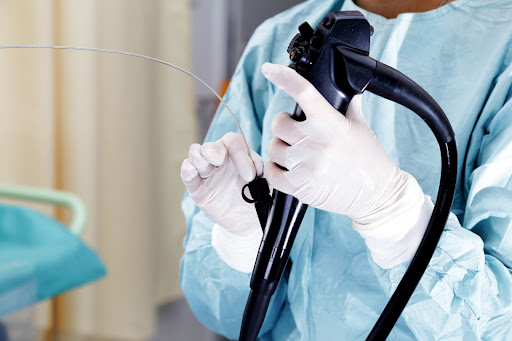10 Things to Know About Gastrointestinal Endoscopy

As a patient, getting new procedures done can be scary and nerve-racking. To relieve those nerves you may want to feel prepared and properly informed about your procedure. While our professional staff strives to make you feel comfortable, knowing what your procedure entails and how you can prepare will allow you to feel confident for the time of your test.
What is gastrointestinal endoscopy?
Gastrointestinal endoscopy is also known as esophagogastroduodenoscopy (EGD). This procedure is performed to diagnose and treat any problems in your upper GI tract. The upper GI tract includes the esophagus, stomach, and the beginning of an intestine.
During the test, a flexible fiberoptic tube will pass through your mouth and down the back of your throat into the esophagus. From the esophagus, the tube slowly moves into the stomach and the start of the intestine.
The tube is equipped with a tiny light and camera which is viewed on a monitor. A small tool can also be used through the fiberoptic tube. Tools can be used for numerous reasons during the procedure such as taking biopsy samples, removing food obstacles, injecting air/fluid, stopping bleeding, and other endoscopic procedures.
The test results can be used to find the cause of unexplained symptoms, identify disorders or problems, and treat those problems. Some symptoms that may require a gastrointestinal endoscopy are abdominal pain, nausea, reflux, difficulty swallowing, or bleeding in the upper GI tract.
What should I know about the procedure?
To be prepared for the procedure, here are ten things to know about the test process. At Wake Endoscopy Center, the procedure will be as follows:
- You are asked to have no food or drink after midnight the night prior to the test.
- Your throat will be sprayed with numbing spray by the nurse.
- The physician will give you medication to sedate you during the procedure.
- The physician will insert the small, lighted flexible fiber-optic tube.
- The flexible fiber-optic tube will examine the lining of the upper GI tract, if needed the physician will take tissue samples for biopsy.
- Once the test is complete, the tube is removed.
- You must be accompanied by a driver who is over the age of 18 to drive you home from the procedure.
- Do not eat or drink for one hour after the procedure.
- You may feel sleepiness (a few hours after) and or a mild sore throat (one to two days after) after the procedure. Throat lozenges may be used for relief of the sore throat.
- You should not return to work, drive or sign any legal documents for the remainder of the day. Any biopsy results will be communicated within 5-7 business days.
While gastrointestinal endoscopy procedures are safe and associated with low risk, there are possible rare complications. Some possible complications with this procedure can be bleeding such as a hemorrhage, tearing in the lining of your upper GI tract such as your stomach and esophagus, or an unforeseen and adverse reaction to the sedation medication.
The gastrointestinal endoscopy procedure can diagnose and treat any problems in your upper GI tract. Whether you have symptoms or your health care provider is recommending a gastrointestinal endoscopy, Wake Endoscopy can provide the latest in procedures. Call us at (919) 783-4888 to schedule your procedure with our caring team.
Back